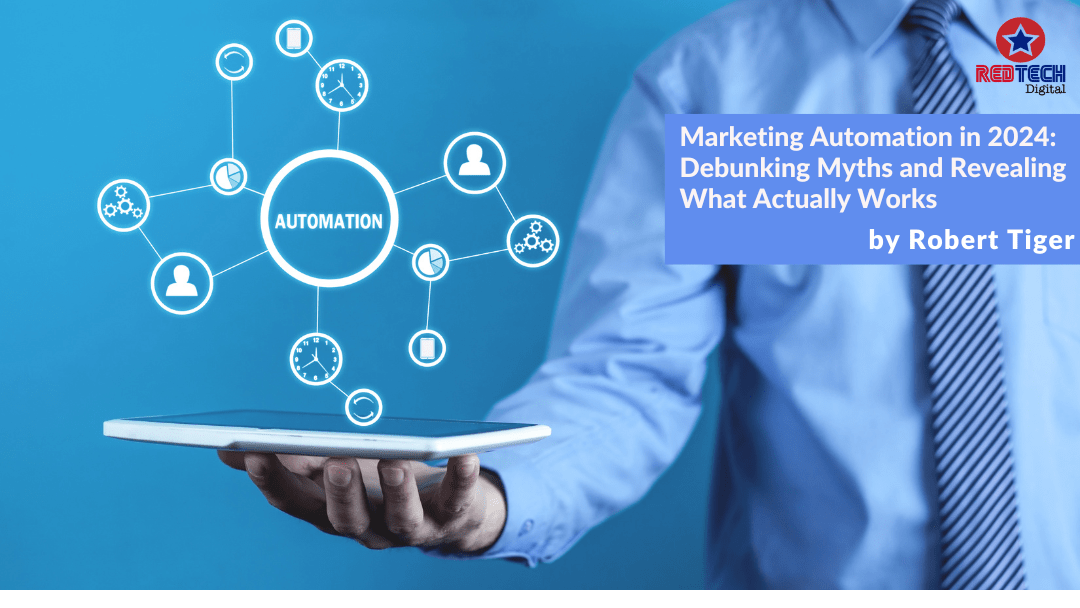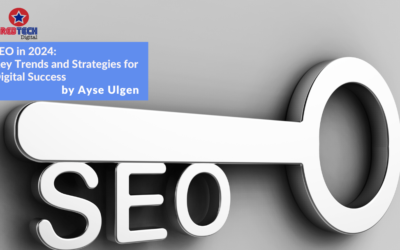Marketing automation has undeniably transformed the digital landscape. However, many businesses still struggle to separate fact from fiction when it comes to implementing these powerful tools. Let’s explore the reality behind common marketing automation myths and discover what truly works in 2024.
The Human Element in Marketing Automation
First and foremost, let’s address the prevalent myth that marketing automation will replace marketing teams. In contrast to this belief, recent analysis of over 500 automation implementations reveals that successful companies actually expanded their marketing teams. Furthermore, these teams evolved to focus on more strategic initiatives rather than routine tasks.
For instance, a notable B2B software company’s recent automation implementation led to role transformations rather than replacements. Subsequently, their email marketing specialist became a customer journey architect, while their social media manager evolved into a content strategist. Additionally, this shift allowed team members to concentrate on strategic planning and creative development.
The Evolution of Marketing Roles
Moreover, the transformation of marketing roles has created new opportunities for professional growth. For example, data analysts have evolved into customer insight specialists, while campaign managers have become experience orchestrators. Consequently, this evolution has led to higher job satisfaction and improved campaign performance.
Accessibility and ROI Across Business Sizes
Contrary to popular belief, marketing automation isn’t exclusively for enterprise-level organizations. In fact, companies with 5-20 employees often achieve higher ROI than larger enterprises. Moreover, this success stems from their ability to implement and optimize solutions without bureaucratic constraints.
The Automation Implementation Pyramid
The automation implementation structure typically follows a three-tier pyramid:
Basic Automation (Entry Level)
-
Investment: $100-500 monthly
-
Time savings: 15-20 hours weekly
-
ROI: 3-5x within six months
-
Features include email sequence automation, basic lead scoring, and social media scheduling
-
Implementation timeline: 2-4 weeks
Mid-Level Automation
-
Investment: $500-2000 monthly
-
ROI: 5-8x within 8-12 months
-
Capabilities expand to advanced segmentation and multi-channel campaigns
-
Implementation timeline: 1-3 months
-
Additional features include behavioral tracking and custom workflows
Enterprise Automation
-
Investment: $2000+ monthly
-
ROI: 7-10x over 18-24 months
-
Advanced features include AI-powered analytics and multi-brand automation
-
Implementation timeline: 3-6 months
-
Complex integration capabilities with existing systems
The Dynamic Nature of Automation
Another significant misconception is the “set it and forget it” approach. Instead, successful automation requires what experts call “Living Automation,” built on three essential principles:
1. Regular performance reviews
2. Customer feedback integration
3. Continuous optimization
Case Study: Dynamic Automation Success
To illustrate this point, consider an e-commerce client’s experience with cart abandonment automation. Initially, their recovery rate was 15%. However, after three months, it dropped to 8%. Following analysis and optimization of the email sequence timing, the recovery rate subsequently increased to 22%.
The optimization process involved:
-
Analyzing customer behavior patterns
-
Testing different message timings
-
Refining content personalization
-
Implementing dynamic pricing strategies
-
Integrating social proof elements
Beyond Email: The Omnichannel Experience
While many associate marketing automation solely with email campaigns, modern automation encompasses the entire customer experience. For example, a fitness equipment company implemented an “Omnichannel Experience Engine” that integrated:
-
SMS delivery updates
-
WhatsApp customer service
-
Social media retargeting
-
Mobile app notifications
-
Website personalization
Measuring Omnichannel Success
As a result of this integrated approach, they experienced:
-
164% increase in customer engagement
-
48% rise in repeat purchases
-
35% improvement in customer satisfaction scores
-
25% reduction in customer service response time
-
42% increase in average customer lifetime value
Notably, no single channel contributed more than 30% of the impact, demonstrating the power of integrated automation.

Over 75% of Marketers Use Web Analytics

Analytics Boosts ROI by 20%

90% of Businesses See Improved Customer Insights

Web Analytics Increases Conversion Rates by 50%
AI and Automation: Finding the Balance
In the realm of AI-assisted automation, human oversight remains crucial. Analysis of 1,000 AI-assisted campaigns showed that those with regular human monitoring performed 72% better than fully autonomous campaigns. Nevertheless, this hybrid approach reduced human time investment by 60% compared to traditional methods.
The AI-Human Hybrid Model
The successful AI-Human Hybrid Model distributes responsibilities effectively:
AI Handles:
-
Pattern recognition in customer behavior
-
Real-time content optimization
-
Predictive analytics for timing
-
Automated A/B testing
-
Dynamic pricing adjustments
-
Customer segmentation updates
Humans Focus On:
-
Strategic direction and planning
-
Creative development and innovation
-
Emotional intelligence in messaging
-
Brand voice maintenance
-
Ethics and compliance oversight
-
Crisis management and special situations
Personalization at Scale
Finally, rather than making marketing impersonal, proper automation enables hyper-personalization at scale. For instance, a professional training company implemented a Precision Personalization Framework considering:
-
Course completion history
-
Industry-specific challenges
-
Career level and aspirations
-
Learning pace preferences
-
Preferred learning style
-
Professional goals
-
Time availability
-
Device preferences
Personalization Results
Consequently, this approach led to:
-
85% increase in course enrollment rates
-
67% improvement in completion rates
-
93% positive feedback on content relevance
-
54% reduction in course abandonment
-
78% increase in student engagement scores
Implementing Successful Automation Strategies
To achieve success with marketing automation in 2024, consider these key principles:
1. Start with human needs and work backward to technology
2. Begin with small, measurable processes
3. Focus on enhancing rather than replacing human connections
4. Maintain regular oversight and optimization
5. Integrate multiple channels for maximum impact
6. Invest in team training and development
7. Establish clear success metrics
8. Create feedback loops for continuous improvement
Implementation Timeline
A successful automation implementation typically follows this timeline:
Month 1-2:
-
Audit existing processes
-
Define clear objectives
-
Select appropriate tools
-
Train core team members
Month 3-4:
-
Implement basic automation
-
Establish baseline metrics
-
Begin data collection
-
Start initial optimizations
Month 5-6:
-
Expand automation scope
-
Integrate additional channels
-
Refine personalization
-
Scale successful processes
Measuring and Maximizing ROI
Understanding and tracking ROI is crucial for marketing automation success. Therefore, organizations should focus on these key metrics:
Primary ROI Indicators
-
Customer Acquisition Cost (CAC)
-
Customer Lifetime Value (CLV)
-
Lead-to-Customer Conversion Rate
-
Campaign Engagement Rates
-
Resource Time Savings
Advanced ROI Tracking
Moreover, sophisticated automation implementations should track:
-
Cross-channel Attribution
-
Customer Journey Analytics
-
Behavioral Scoring Impact
-
Retention Rate Changes
-
Revenue Velocity
For instance, a retail company implementing advanced ROI tracking discovered that their automation system influenced:
-
45% reduction in CAC
-
67% improvement in lead quality
-
89% faster lead response time
-
123% increase in marketing-qualified leads
-
34% higher customer retention rates
Future Trends in Marketing Automation
Looking ahead to the latter half of 2024 and beyond, several emerging trends are shaping the future of marketing automation:
Integration Advancements
Furthermore, we’re seeing increased focus on:
-
Cross-platform data synchronization
-
IoT device integration
-
Voice assistant marketing
-
Augmented reality experiences
-
Blockchain-based customer loyalty programs
Privacy-First Automation
Subsequently, successful automation strategies must prioritize:
-
First-party data collection
-
Privacy-compliant tracking
-
Transparent data usage
-
Consumer consent management
-
Secure data storage and transmission
Predictive Analytics Evolution
-
AI-driven customer behavior forecasting
-
Automated content optimization
-
Dynamic pricing mechanisms
-
Proactive churn prevention
-
Real-time personalization adjustments
Best Practices for Implementation
To ensure successful automation implementation, organizations should follow these proven best practices:
Planning Phase
-
Conduct thorough process audit
-
Define clear success metrics
-
Map customer journeys
-
Assess team capabilities
-
Create training programs
Technical Setup
-
Start with core integrations
-
Test thoroughly before launch
-
Document all processes
-
Create backup procedures
-
Establish monitoring systems
Ongoing Management
-
Regular performance reviews
-
Team skill development
-
Continuous optimization
-
Stakeholder communication
-
Compliance monitoring
Conclusion
The reality of marketing automation in 2024 differs significantly from common misconceptions. Therefore, businesses must approach automation as a tool for enhancement rather than replacement. Most importantly, successful automation strategies begin with human needs and build toward technological solutions, not the other way around.
By understanding these truths about marketing automation, businesses can better position themselves for success in the evolving digital landscape. Above all, remember that automation should strengthen human connections rather than replace them, leading to more meaningful and effective marketing strategies.
Key Features of Web Analytics Tools
Essential Analytics Features for Marketers
Real-Time Data Tracking
Customizable Dashboards
Advanced Segmentation
Comprehensive Reporting
Understanding Web Analytics
The Role of Web Analytics in Digital Marketing
Explore Our Latest Insights on Digital Marketing
SEO in 2024: Key Trends and Strategies for Digital Success
The digital landscape continues to evolve at a rapid pace, and staying ahead in SEO requires adaptability as well as strategic thinking. Moreover, based on insights from industry experts, we've compiled a comprehensive overview of the most important SEO trends and...
The Future of Digital Marketing:Thriving in a Cookieless World
As we navigate through 2024, digital marketers face a transformative challenge: the sunset of third-party cookies in Google Chrome. While this change has sparked concerns across the industry, recent data suggests that this transition might actually present an...




